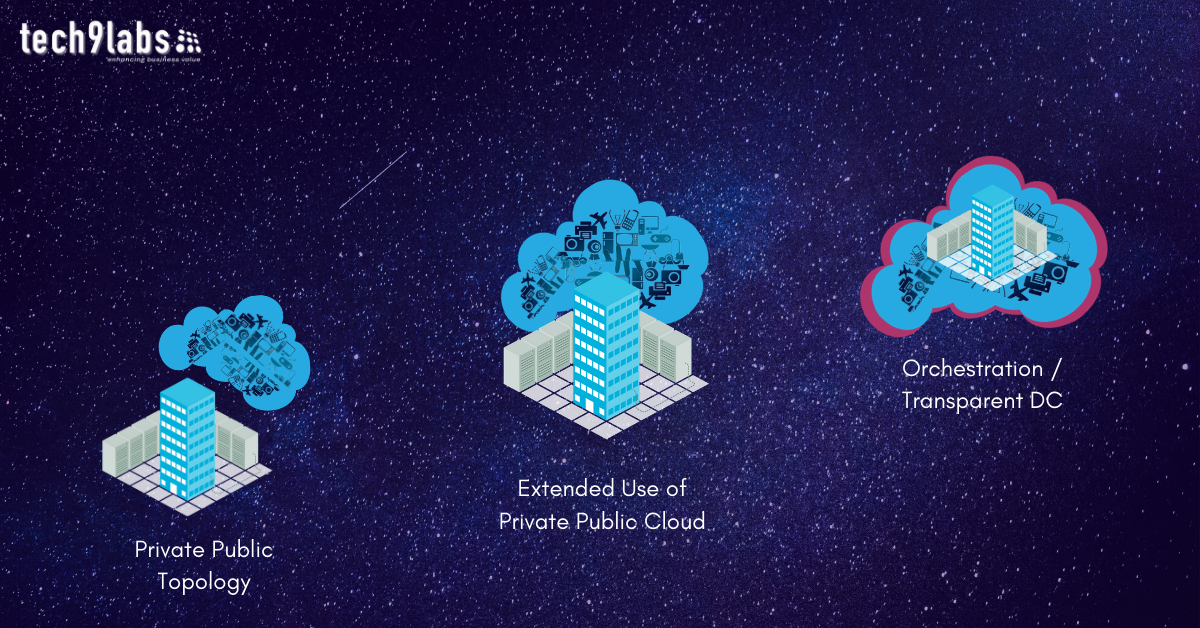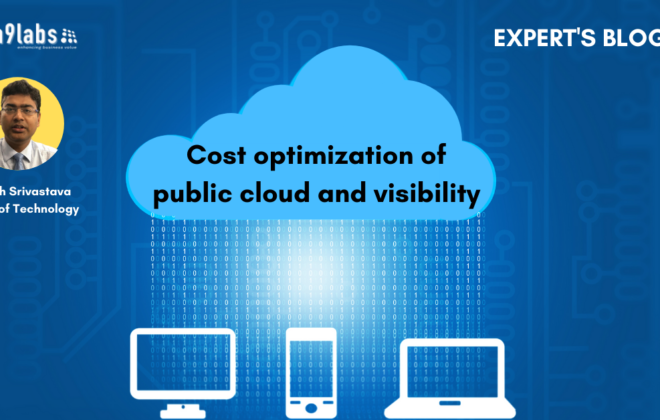Simplified Roadmap to Cloud Adoption
Migrating applications and data to public-cloud environment can be a complex affair and one may require special skills and professional support for seamless and quick migration. Companies can simplify the transition process with hybrid-cloud architecture that combine private & public cloud features depicted below:
- Establish Private-Public Topology (Routing of IT traffic from an On-premise Datacentre to Public Cloud)
Companies route all the traffic through private or On-premise data centres and deploy applications (partly or completely) in the public cloud. With this architecture, company can apply internal cybersecurity controls and still take advantage of public-cloud services.
Suitable for: All size corporations
This gives quick rollout and experience of a public cloud environment without affecting or educating internal IT team to train on the public cloud environment. This approach offers a quick public cloud adoption.
This approach comes with the higher cost as existing cost of network/Internet can increase.
2. Extended Use of Private and Public Cloud
This model places applications in the public cloud but allows employees and customers to access both the sites directly. Customer can secure public cloud with Cloud native technologies; provided cybersecurity controls applied by default. Data is stored in a private cloud with additional security controls.
Suitable for: Entities with unpredictable IT growth I FinTech / new age companies
This implementation approach gives greater scalability and resolve data-localisation issues such as of financial and regulated sectors.
Increase in the complexities and potential creation of gaps when limitations of architecture are not understood
3. Orchestrate Between Private & Public Cloud Architecture
Companies places both, applications and data, in the public cloud simultaneously. Enterprises apply cybersecurity controls from third-party services such as CASB, IAM, Encryption etc. Companies having conventional and monolithic IT systems which need huge investment for cloud readiness. Those companies can create an orchestration layer and manage both the cloud through a single management layer with an option to migrate in/out from the cloud basis their business requirement.
Suitable for: Entities with monolithic systems I Entities with unpredictable IT growth / regulated entities
This approach comes with a huge benefit of reduction in Data-centre and refresh costs and reduction in provisioning of the IT infra and go live of apps in no time. Companies can use SaaS and PaaS solution also and orchestrate between the two however, in most sectors, there are no mature SaaS solutions for core business functions such as billing for the utilities sector, trading low latency solutions and core/online banking for financial services.
This approach requires deep expertise in cybersecurity and cloud architecture and increased complexities. Above approach also help controlling the cost at both the side where company can course correct the adoption and reduce their costs before going costs out of its hand.
Cloud services can make companies leaner, agile and nimble. Migrating to public-cloud platforms poses complexities and real challenges, but these challenges can be overcome if companies sequentially or in phased manner set up hybrid cloud platforms according to the above migration approaches and create an orchestrate layer to manage the On-prem, Enterprise Private Cloud and Public cloud all three collectively.
Director Technology
Tech9Labs









